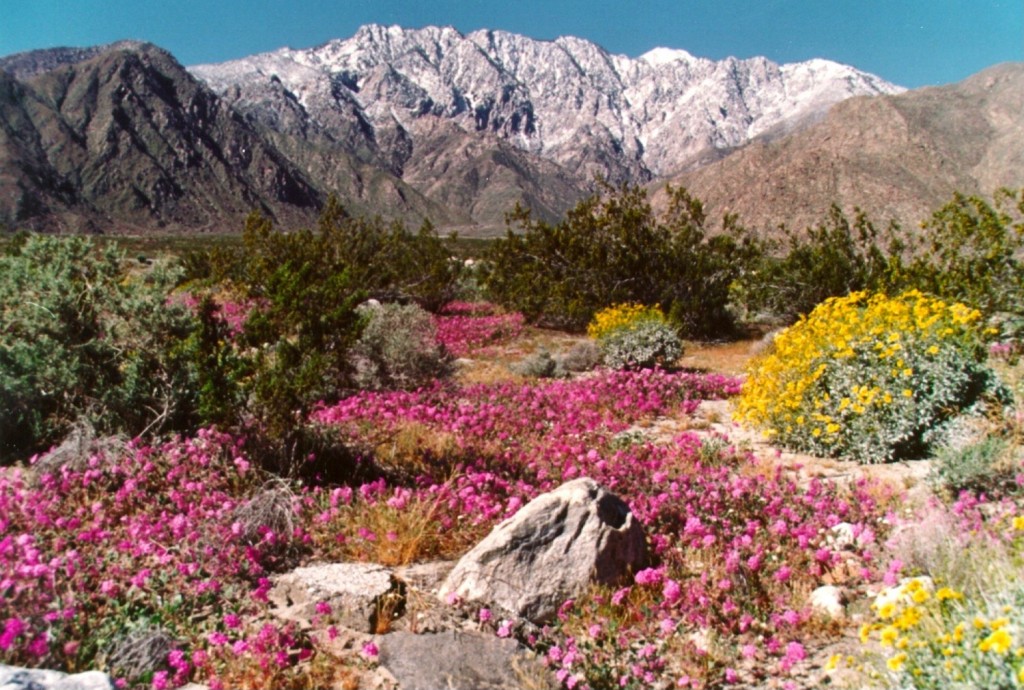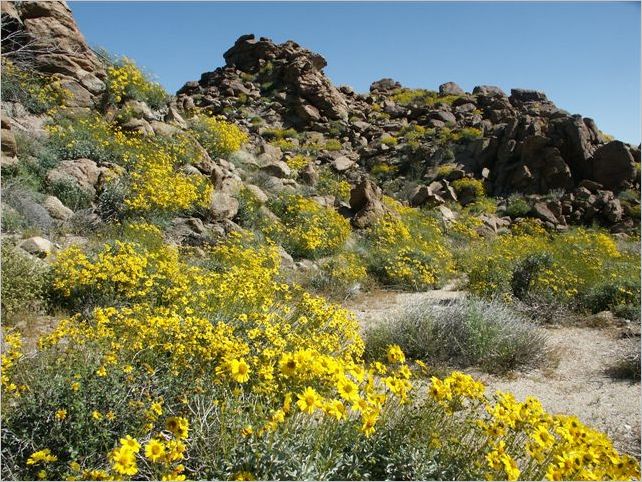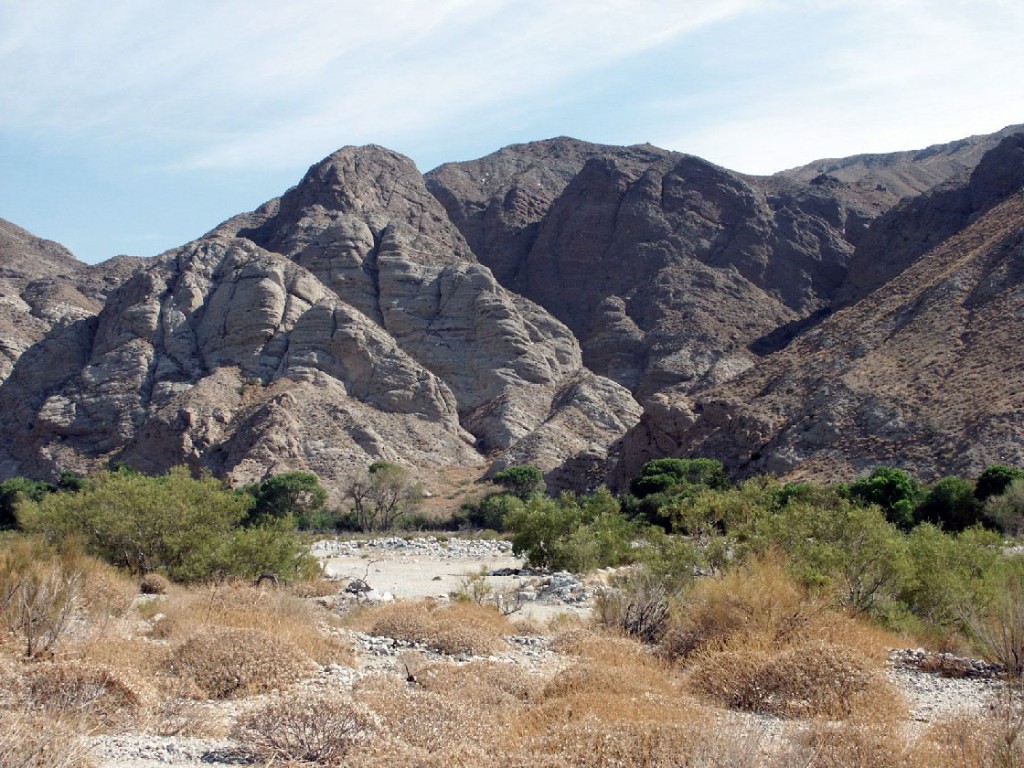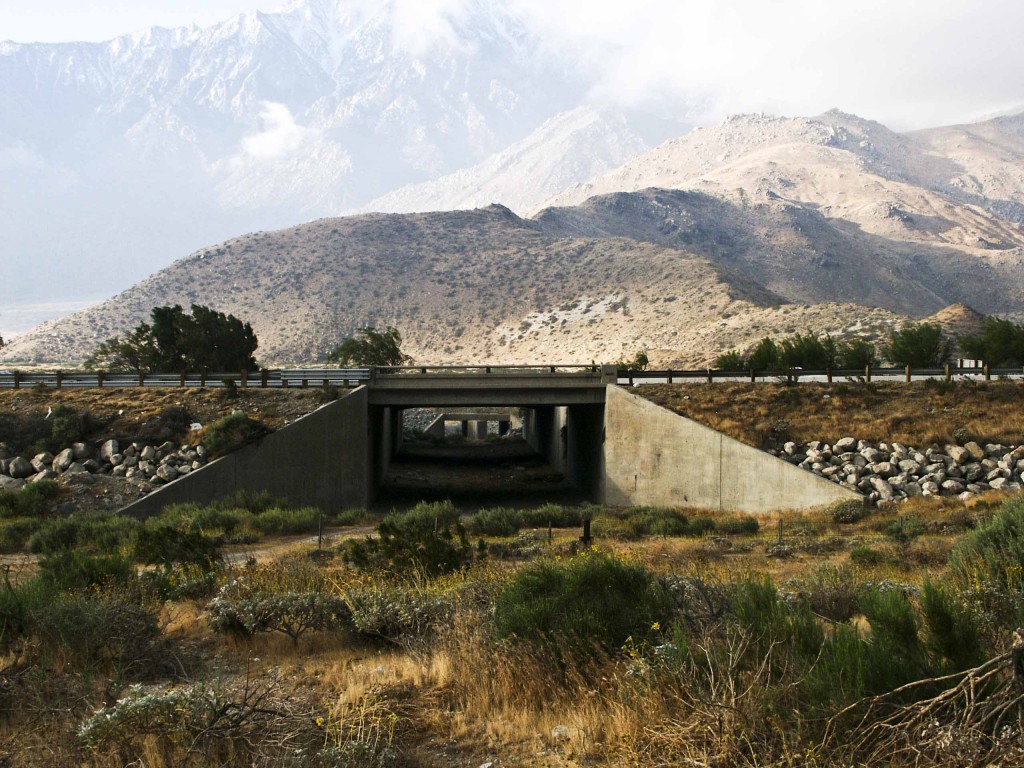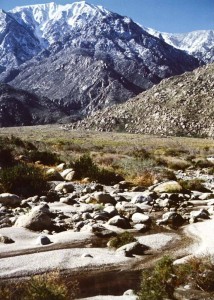Strategic Plan
Coachella Valley Mountains Conservancy
March 2007
EXECUTIVE SUMMARY
The Coachella Valley Mountains Conservancy’s mission is to acquire and hold, in perpetual open space, mountainous lands surrounding the Coachella Valley and natural community conservation lands within the Coachella Valley, and to provide for the public’s enjoyment of, and the enhancement of their recreational and educational experiences on, those lands in a manner consistent with their protection.
From its creation by the Legislature in 1990 through 1996, the Conservancy received no state funding and was wholly dependent on contributions from local governments and private citizens. Despite limited resources, the Conservancy had considerable success in fulfilling its mission because of creative partnerships it was able to build; it was, however, never able to retain more than part time staff. The Conservancy became a state agency within the Resources Agency on January 1, 1997 and in the 1996-97 fiscal year, the Conservancy received some state funding through the Environmental License Plate Fund (ELPF) for the first time. The state funding enabled the Conservancy to retain a full time Executive Director, but did not provide funding for additional staff. The Conservancy continued to raise part of its own budget, primarily through a contract with the Coachella Valley Association of Governments (CVAG) for preparation of the Coachella Valley Multiple Species Habitat Conservation Plan/Natural Community Conservation Plan (MSHCP) and was thereby able to retain an additional full time staff person, an Associate Governmental Program Analyst (AGPA). In subsequent years, the Conservancy has continued to receive ELPF funds and funds from CVAG for work on the MSHCP. Increases in both over the years have enabled the Conservancy to add an Executive Secretary position and have an adequate “support” budget for the operation of the Conservancy (staff salaries, office lease, and other operating expenses). With completion of the preparation of the MSHCP, the contract with CVAG expired in early 2007. One of the challenges for the Conservancy, therefore, is the future funding for its support budget.
The Conservancy received its first capital outlay funds (for land acquisition) from the state in 2000 from Proposition 12, in the amount of $5 million. The Conservancy received $20 million from Proposition 40, the 2002 bond measure. Prior to receiving bond funds, the Conservancy’s acquisition program relied on grants it obtained, donations, and cooperative acquisitions with other entities. Since receiving state bond funds for its acquisition program, the Conservancy’s ability to accomplish its mission has been greatly enhanced. The Conservancy has been able to make numerous local assistance grants to non-profit organizations and local agencies, assemble various multi-entity acquisition partnerships, and has been successful in assisting non-profit organizations to obtain grants from new sources, such as the Resources Legacy Fund Foundation. Through this means the Conservancy has ensured the conservation of over 46,200. acres. With the approval of Proposition 84 by the voters in November 2006, the Conservancy will receive $36 million for its acquisition program over the next three years, providing a tremendous opportunity to make progress in accomplishing the Conservancy’s mission.
The purpose of this updated strategic plan is to articulate the Conservancy’s mission and history, discuss current challenges and opportunities, and delineate strategic goals and objectives.
TABLE OF CONTENTS
EXECUTIVE SUMMARY
TABLE OF CONTENTS
1.0 MISSION STATEMENT
2.0 AGENCY DESCRIPTION & HISTORY
3.0 RESOURCE VALUES
4.0 CHALLENGES AND OPPORTUNITIES
5.0 STRATEGIC GOALS & OBJECTIVES
Except as otherwise noted, all photos are by Bill Havert.
1.0 MISSION STATEMENT
The Conservancy’s mission is set forth in state law as Public Resources Code (PRC) §33500, et seq.:
33500. The Legislature hereby finds and declares that the mountains and natural community conservation lands of the Coachella Valley in Riverside County contain unique and important open-space, wildlife, scenic, environmental, anthropological, cultural, scientific, educational, and recreational resources that should be held in trust for the enjoyment of, and appreciation by, present and future generations.
33501. The Coachella Valley Mountains Conservancy is hereby created as a state agency within the Resources Agency to acquire and hold, in perpetual open space, mountainous lands surrounding the Coachella Valley and natural community conservation lands within the Coachella Valley, and to provide for the protection of wildlife resources on, and the public’s enjoyment of, and the enhancement of their recreational and educational experiences on, those lands in a manner consistent with the protection of those lands and the resource values specified in Section 33500.
2.0 AGENCY DESCRIPTION & HISTORY
The importance of the remarkable resources in and surrounding the Coachella Valley has been recognized in many ways. The northern boundary of the Coachella Valley is formed by Joshua Tree National Park; the southern boundary by the Santa Rosa and San Jacinto Mountains National Monument, designated by Congress in 2000. Forming the eastern edge of the valley are the Mecca Hills and Orocopia Mountains Wilderness areas and Dos Palmas Area of Critical Environmental Concern. The western edge of the Coachella Valley includes the Whitewater Canyon Area of Critical Environmental Concern and the San Gorgonio Wilderness. On the valley floor, the Coachella Valley Fringe-toed Lizard Preserve System was established in the mid 1980s to protect some of the fast disappearing sand dune ecosystem.
In the late 1980’s the Coachella Valley Mountains Trust, a nonprofit organization with broad representation among civic leaders, elected officials, environmentalists, and developers, approached State Senator Robert Presley about creating a state agency to protect the mountains surrounding the Coachella Valley. Senator Presley introduced a bill to create the Coachella Valley Mountains Conservancy, but because of the State’s reluctance to incur new fiscal obligations, the Conservancy, although created by the state, did not receive funding from the state at that time.
The governing board consists of 21 voting members: the mayor or a member of the city council of each of the cities of Cathedral City, Desert Hot Springs, Indian Wells, La Quinta, Palm Desert, Palm Springs, and Rancho Mirage, appointed by each respective city council; the Chairman of the Tribal Council of the Agua Caliente Band of Cahuilla Indians; one member of the Board of Supervisors of the County of Riverside; three members chosen from the general public residing in the Conservancy’s territory, one appointed by the Governor, one by the Senate Committee on Rules, and one by the Speaker of the Assembly; the Secretary of the Resources Agency or his designee; the Director of Fish and Game or designee; the Executive Director of the Wildlife Conservation Board or designee; the Director of Parks and Recreation or designee; the Director of Finance or designee; the Vice President, Division of Agriculture and Natural Resources, of the University of California or designee; the State Director for California of the United States Bureau of Land Management or designee; the Regional Forester for the Pacific Southwest Region of the United States Forest Service or designee; and the Regional Director for the Pacific West Region of the National Park Service or designee.
From 1991, when the Conservancy became operational, until 1997, the Conservancy received no state funds for either basic operations or its capital outlay acquisition program. For its basic operations, the Conservancy relied on contributions from local member agencies and fundraising efforts. This supported only part-time staff. In 1996, Senator Dave Kelley authored legislation that made the Conservancy part of the Resources Agency (as all the other state conservancies already were) as of January 1, 1997. The legislation also expanded the Conservancy’s territory to coincide with the boundaries of the Coachella Valley Multiple Species Habitat Conservation Plan/Natural Communities Conservation Plan (MSHCP) area. This also enabled the Conservancy to receive sufficient funds from the state to employ a full-time Executive Director. The Conservancy funded a second full-time position through a contract with the Coachella Valley Association of Governments (CVAG) for preparation of the MSHCP, an effort which the Conservancy had initiated with CVAG in 1994. In subsequent years, the Conservancy was able to add a part time Administrative Assistant position, which evolved into a full time Executive Secretary position in 2006. Since 1997, the Conservancy’s support budget has continued to be a combination of state non-general fund money and non-state sources.
From 1991 to 1997, the Conservancy implemented a successful program of protecting important areas through its ability to work in partnership with its local, state, and federal member agencies. The Conservancy, with only part-time staff and no capital outlay acquisition funds from the state, was able to pursue a land conservation program by:
• Obtaining grants from such sources as the Environmental Enhancement Mitigation program (EEM) and the Transportation Efficiency Act. Grants were further leveraged by obtaining local matching funds and participation by other entities in partnership acquisitions.
• Helping to secure funds for agencies represented on its Governing Board, such as by assisting the Bureau of Land Management and the U.S. Forest Service to obtain Land and Water Conservation Fund appropriations, preparing Conceptual Area Acquisition Plans for the Department of Fish and Game so that Wildlife Conservation Board funds could be expended in the Coachella Valley, and writing grants on behalf of local agencies and non-profit organizations from sources such as EEM and the Habitat Conservation Fund. The Conservancy also facilitated many of the acquisitions by these agencies by identifying willing sellers, obtaining appraisals, acquiring options to purchase lands and assigning the right to purchase to one of these agencies, facilitating land exchanges, and other such means.
• Obtaining donations of land or conservation easement interest in land.
• Fundraising through an Adopt an Acre program to obtain private contributions for acquisitions.
• Seeking out special opportunities to acquire land through Tax Sale Agreements to acquire tax-defaulted properties.
The Conservancy received its first capital outlay funds from Proposition 12 in 2000, in the amount of $5 million. The Conservancy received $20 million from Proposition 40, the 2002 bond measure. With those funds, the Conservancy has been able to make numerous grants to non-profit organizations and local agencies for acquisitions. In addition, the Conservancy has assembled various multi-entity acquisition partnerships, facilitated acquisitions by other entities, and assisted other entities obtain grants from various sources. The total acreage of land acquired directly by the Conservancy, through partnership acquisitions, with grants from the CVMC, or in transactions facilitated by the Conservancy is more than 46,200 acres. A very conservative estimate of the total value of this acreage is $75,000,000.
Since its inception in 1991, the Conservancy has accomplished the following:
Direct Acquisitions (Title vested in State of California acting by and through the Conservancy, including conservation easements. To minimize management costs to the state, the Conservancy takes title only when absolutely necessary.)
4,659 acres – Acquired with grant funds and local matching funds, donations, and Proposition 12 funds.
Partnership Acquisitions (Multi-entity funding partnerships assembled by the Conservancy; title vested in another entity)
17,984 acres – The Conservancy contributed highly-leveraged Proposition 12 or Proposition 40 funds to acquisitions; the bulk of the funding came from partners who also took title.
Acquisition Grants to Other Entities (Acquisitions funded by Proposition 12 and 40 grant funds without significant contributions from other entities)
7,133 acres – Grants with Prop 12 and Prop 40 funds
Facilitated Acquisitions (Acquisitions involving no Conservancy funds, but the Conservancy facilitated the acquisition through such means as helping the acquiring entity secure funds, negotiating the transaction with the landowner, or securing and assigning options to purchase)
16,441 acres – Entities whose acquisitions were assisted by the Conservancy include Bureau of Land Management, U.S. Forest Service, Wildlife Conservation Board, Center for Natural Lands Management, Wildlands Conservancy, Agua Caliente Band of Cahuilla Indians, City of Palm Desert, Coachella Valley Association of Governments, and the Friends of the Desert Mountains.
Under contract to the Coachella Valley Association of Governments, the Conservancy has also prepared the MSHCP, which is expected to be adopted by local cities, the County, Caltrans, and an array of special districts in 2007. This Plan identifies an additional approximately 160,000 acres (as of 2006) of land to be acquired and added to existing conservation lands to create a 725,000 acre system of conserved lands. A variety of funding sources, including development mitigation fees, transportation mitigation fees, landfill tipping fees, and state and federal contributions will fund acquisition and management of these lands in perpetuity. The passage of a state bond measure in November 2006 will provide $36 million to the Conservancy for land acquisition, ensuring that the Conservancy will continue to do its part in conserving important open space lands and helping to implement the MSHCP.
3.0 RESOURCE VALUES
The mountains surrounding the Coachella Valley stand as a magnificent backdrop to the desert communities, with the prominent peaks of the San Jacinto and Santa Rosa Mountains to the south and west, the San Bernardino and Little San Bernardino Mountains and the deeply eroded Indio Hills to the north and east. The San Jacinto escarpment, in fact, is the steepest in the United States, a nearly sheer rise through five biological life zones from Sonoran desert at sea level to alpine fell fields atop San Jacinto Peak at over l0,800 feet. Because of this extraordinary biological diversity and geological grandeur, The San Jacinto Mountains have been included as a component of the Peninsular Mountains Biosphere Reserve and a portion of the Santa Rosa Mountains are within the Colorado Desert Biosphere program of the United Nations UNESCO program. These mountains were designated the Santa Rosa and San Jacinto Mountains National Monument by Congress in 2000. The effort to establish the National Monument was led by the Conservancy, and the legislation authored by Representative Mary Bono, with Senator Dianne Feinstein sponsoring the legislation in the Senate.

Photo by Cameron Barrows
The mountains are home to a wealth of plant and animal species. From the rocky crags to rare desert riparian habitats, the mountains support such diverse species as the endangered peninsular bighorn sheep, the unique desert slender salamander, the least Bell’s vireo, mountain lions, prairie falcons, and golden eagles. For the majority of the residents and hundreds of thousands of annual visitors to the desert communities, the mountains above all mean majestic vistas, from towering snow covered peaks to the subtle and changing colors of a desert sunset reflected on the slopes. As the scenic backdrop to the Coachella Valley resort communities, the mountains are a vital economic resource: a major part of the attraction of these communities to visitors; they also provide tremendous recreational amenities, including hiking, horseback riding, nature study, backpacking, and ecotourism opportunities.

Palm Canyon – Photo by Pam Lennon
Palm Canyon, which divides the Santa Rosa and San Jacinto Mountains, contains this nation’s largest native fan palm oasis. More than 6,000 palms, in isolated stands and dense groves, dot Palm Canyon, and nearby Andreas and Murray Canyons. Ancient Cahuilla Indian villages, trails, petroglyphs and pictographs, unique rock fish traps, and burial sites are also found throughout these mountains. The particularly impressive Panik (ancestral Cahuilla) village is listed in the National Register of Historic Places, and the area is now preserved as part of the Agua Caliente Band of Cahuilla Indians “Indian Canyons Heritage Park”. Other areas in the Coachella Valley also contain significant cultural resources, including portions of a village site and exquisite concentrations of petroglyphs on lands protected through the Conservancy’s acquisition efforts.
 The Coachella Valley is situated within a unique biogeographic convergence zone of three ecoregions (the Sonoran Desert, the California South Coast and the Mojave Desert). The Valley was once dominated by nearly 100 square miles of aeolian sand dune; less than five percent of that historic distribution remains. The majority of the remaining viable dune habitat is contained within the 17,000acre Coachella Valley Preserve system. The valley also includes relict fan palm oasis woodlands that occur with desert canyon seeps and along the San Andreas fault-line. The dune and oasis system protected in the Coachella Valley Preserve supports a high degree of endemism (e.g., the Coachella Valley milkvetch, the Coachella Valley fringe-toed lizard, the Coachella Valley Jerusalem cricket) as well as numerous other species of conservation concern (e.g., desert pupfish, flat-tailed horned lizard, western yellow bat, Le Conte’s thrasher).
The Coachella Valley is situated within a unique biogeographic convergence zone of three ecoregions (the Sonoran Desert, the California South Coast and the Mojave Desert). The Valley was once dominated by nearly 100 square miles of aeolian sand dune; less than five percent of that historic distribution remains. The majority of the remaining viable dune habitat is contained within the 17,000acre Coachella Valley Preserve system. The valley also includes relict fan palm oasis woodlands that occur with desert canyon seeps and along the San Andreas fault-line. The dune and oasis system protected in the Coachella Valley Preserve supports a high degree of endemism (e.g., the Coachella Valley milkvetch, the Coachella Valley fringe-toed lizard, the Coachella Valley Jerusalem cricket) as well as numerous other species of conservation concern (e.g., desert pupfish, flat-tailed horned lizard, western yellow bat, Le Conte’s thrasher).
When the Coachella Valley Preserve was threatened with a new city development proposal, the Conservancy responded by teaming with other acquisition partners to acquire the proposed development site, the 8,881-acre Cathton property north of the Preserve. This acquisition expanded the Coachella Valley Preserve system by over 50 percent, significantly enhancing the existing preserve system’s prospects for long-term viability. The acquisition also created a landscape linkage between Joshua Tree National Park and the Coachella Valley Preserve – the best and largest remnant of natural habitat on the valley floor.
Long term conservation of the magnificent biological resources within the Coachella Valley depends on (1) setting aside enough “core habitat” for the area’s many endangered, threatened, and sensitive species, (2) maintaining the ecological processes, such as hydrological regimes and fluvial and aeolian sand transport processes, that sustain those habitats over time, and (3) protecting wildlife movement corridors between major open space areas. Examples of crucial corridors, in addition to the one protected by the Cathton property acquisition, include the linkages between the San Jacinto/Santa Rosa Mountains and the San Bernardino Mountains, which are separated by Interstate 10; the San Bernardino Mountains and Little San Bernardino Mountains, which are separated by Highway 62; and the Mecca Hills/Orocopia Mountains Wilderness areas and Joshua Tree National Park, which are also separated by Interstate 10.
4.0 CHALLENGES AND OPPORTUNITIES
As the Conservancy completed its 10th year as an agency within the Resources Agency at the end of 2006, and its 16th year overall, the Conservancy was at a significant point in its evolution, with two transformational changes occurring:
1. One of the primary endeavors of the Conservancy for the last ten years has been completed; namely, the preparation of the MSHCP. This is both an important accomplishment and an occasion for change in terms of focus and funding. With the completion of the revised Draft MSHCP, staff will no longer be devoting large amounts of time to that project, and the Conservancy’s contract with CVAG for that work has ended; thus, eliminating one of the Conservancy’s sources of funding.
2. The passage of Proposition 84 in November 2006 will provide the Conservancy with $36 million for acquisitions. This is seven times what the Conservancy received from Proposition 12 in 2000 and nearly double the amount from Proposition 40 in 2002. This significant new funding source comes at a time when the MSHCP, if it receives final approval as expected by the end of 2007, will provide the Coachella Valley Conservation Commission (CVCC), the agency that will implement the MSHCP, with a tremendous, ongoing funding source to acquire and manage conservation lands.
These two seminal changes present both challenges and opportunities. The primary challenge will be replacing the funding from the CVAG contract to maintain full funding for the Conservancy’s support budget. While this is a very real challenge, finding the solution also presents new opportunities for ways in which the Conservancy can accomplish its mission. On the capital outlay side, Proposition 84 funding affords an enormous opportunity to accomplish the Conservancy’s land conservation mission, and at the same time underscores the importance of maintaining a sufficient support budget to effectively implement the acquisition program. These challenges and opportunities are discussed further below.
Support Budget Challenges and Opportunities
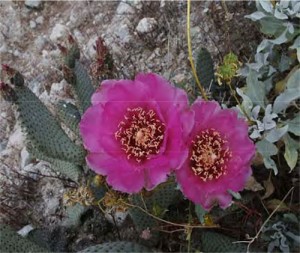 The expiration of the contract with CVAG creates a shortfall in the Conservancy’s support budget, necessitating the development of another funding source to supplement the funding received from the state. The universe of possibilities for such non-state funding is governed by the Conservancy’s dual mission of protecting sensitive resource lands and providing for the public’s enjoyment and appreciation of those lands. Potential sources of such “Reimbursement” funds (as they are called in state budgeting parlance) include services the Conservancy might provide to assist other entities in their land acquisition programs, and services the Conservancy might provide to other entities regarding the development and implementation of trails plans and conservation education/interpretive programs.
The expiration of the contract with CVAG creates a shortfall in the Conservancy’s support budget, necessitating the development of another funding source to supplement the funding received from the state. The universe of possibilities for such non-state funding is governed by the Conservancy’s dual mission of protecting sensitive resource lands and providing for the public’s enjoyment and appreciation of those lands. Potential sources of such “Reimbursement” funds (as they are called in state budgeting parlance) include services the Conservancy might provide to assist other entities in their land acquisition programs, and services the Conservancy might provide to other entities regarding the development and implementation of trails plans and conservation education/interpretive programs.
Over the years the Conservancy has had considerable experience in assisting entities with acquisitions, including CVAG’s transportation mitigation purchases and acquisitions with Coachella Valley Fringe-toed Lizard mitigation fees to implement that Habitat Conservation Plan. Thus, the Conservancy is well-positioned to pursue contracts with appropriate entities to provide land acquisition services.
In its work preparing the MSHCP, the Conservancy played a key collaborative role in developing the Santa Rosa and San Jacinto Mountains Trails Plan, as well as with developing guidelines for siting future trails in other areas of the MSHCP Preserve System. The need for additional trails, and conservation education/interpretive programs, throughout the Coachella Valley, is already high and will increase dramatically with the area’s future growth. Thus, a strong potential exists for the Conservancy to contract with entities for services to help meet this need.
Capital Outlay Budget Challenges and Opportunities
With Proposition 84 funds expected to be appropriated to the Conservancy over the next three years, beginning in fiscal year 2007-08, for its land acquisition program, the opportunities are enormous and the challenge of effectively expending these funds to maximize what is accomplished is most welcome. As in the past, the Conservancy will continue to leverage bond funds and provide support for other acquisition programs. If the Conservancy does secure a contract to assist another entity with its acquisition program, it will provide expanded opportunities for coordinating multiple acquisition programs and partnership acquisitions, where appropriate; thereby enhancing the Conservancy’s ability to implement its conservation mission. The contracting entity would benefit from the Conservancy’s experience and knowledge, and realize efficiency in its acquisition program by avoiding the duplication of effort and availing itself of the acquisition partnership opportunities.
San Jacinto—San Bernardino Mountains Wildlife Movement Corridor acquisition—2005
5.0 STRATEGIC GOALS & OBJECTIVES
Three strategic goals delineate what the Conservancy needs to do to implement its mission.
Goal 1. Secure new non-state funding to ensure full funding for the Conservancy’s support budget.
Goal 2. Acquire or otherwise protect key natural areas in the mountains surrounding the Coachella Valley and natural community conservation lands within the Coachella Valley.
Goal 3. Provide enhanced educational, interpretive, and recreational opportunities for the public to increase their appreciation, understanding, and enjoyment of the mountains.
More specific objectives necessary to the accomplishment of each of these goals are described below.
Objectives for Goal 1 [Secure new non-state funding to ensure full funding for the Conservancy’s support budget.]
1. Seek a contract with the Center for Natural Lands Management to provide acquisition services for expenditure of CVFTL mitigation fees and coordination of acquisitions with the Coachella Valley Conservation Commission (CVCC). Because the CVFTL fee is subsumed into the MSHCP mitigation fee if the latter is approved, and the CVCC will thereafter administer the fee, a contract with CNLM would be a short-term contract.
2. Explore the potential to contract with CVAG to provide services for the acquisition of the remaining freeway interchange and associated arterials mitigation requirements. Because only about 200 acres remain to be acquired, this would be a limited term contract.
3. Explore the potential to contract with the CVCC to provide acquisitions manager services if the MSHCP is approved.
4. Explore the potential to contract with one or more entities to assist with the development and implementation of trails planning and/or conservation education/interpretive programs.
Objectives for Goal 2 [Acquire or otherwise protect key natural areas in the mountains surrounding the Coachella Valley and natural community conservation lands within the Coachella Valley.]
1. Develop and implement a Proposition 84 acquisition program, focusing on grants to other entities. Grants to other entities are preferred over the Conservancy’s taking title because the Conservancy is not staffed to manage land.
2. Pursue acquisition partnerships in order to leverage Proposition 84 bond funds.
3. Help secure funds for agencies represented on the Conservancy’s Governing Board, such as by assisting the Bureau of Land Management and the U.S. Forest Service in obtaining Land and Water Conservation Fund appropriations; writing grants on behalf of local agencies or non profit organizations, or providing technical assistance to them, to obtain grants from sources such as EEM, the National Fish and Wildlife Foundation, the Habitat Conservation Fund, and the Resources Legacy Fund Foundation.
4. Help facilitate acquisitions by other entities that might not otherwise have the wherewithal to undertake acquisitions by identifying willing sellers, obtaining appraisals, acquiring options to purchase lands and assigning the right to purchase to one of these agencies, facilitating land exchanges, and other such means.
5. Seek land donations.
Objectives for Goal 3 [Provide enhanced educational, interpretive, and recreational opportunities for the public to increase their appreciation, understanding, and enjoyment of the mountains.]
1. Participate in the MSHCP Trails Management Subcommittee to assist in implementing the Santa Rosa and San Jacinto Mountains Trails Plan to provide for diverse recreation experiences in the mountains while protecting important resource values.
2. Coordinate with local, federal, tribal, and other state agencies, non-profit organizations, and user groups on regional trails planning consistent with resource conservation.
3. Seek opportunities to contract with entities to provide services for preparing and implementing trails plans for other areas of the Coachella Valley, especially the north side of the valley, and/or conservation education/interpretive programs. (While this is one strategy to generate support budget funding, the ability to do this may be constrained by the size of the Conservancy’s staff, and the fiscal need to pursue this may not exist if the Conservancy is contracting with other entities to provide acquisition services.)

